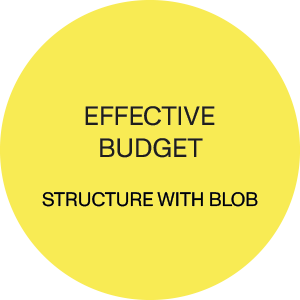Effective budget is a well-structured financial plan that allocates resources efficiently to meet organizational goals.
It involves careful consideration of income, expenses and strategic priorities.
By aligning financial allocations with priorities, effective budget optimizes resource utilization, minimizes waste and contributes to overall fiscal responsibility and success.
Personalized Progress Disclaimer. Embarking on a journey to enhance your professional presence can feel like a significant undertaking. We want to assure you that our approach is tailored to your pace, ensuring a smooth and comfortable experience. Our collaborative process begins with an exploration of your goals, and together, we navigate the learning curve at a speed that suits you. Your progress is the compass, and we are here to guide you, ensuring a relaxed and uplifting journey. You can trust that every step is orchestrated to align with your comfort, ensuring a positive and manageable path towards achieving your business aspirations.

By guiding the client through any of these steps, we can help structure an effective budget that aligns with the client’s goals, maximizes resources and positions the organization for success:
- Understand Client Goals and Objectives: engaging in discussions with the client to thoroughly understand their short-term and long-term goals. This understanding forms the basis for aligning the budget with strategic objectives
- Define Key Initiatives: working with the client to identify and define key initiatives or projects that are central to achieving their goals. This could include marketing campaigns, product launches or other strategic endeavors
- Prioritize Budget Categories: collaboratively prioritizing budget categories based on the client’s priorities. Allocating resources to areas that have the greatest impact on achieving key objectives
- Historical Performance Analysis: analyzing historical performance data to identify areas of past success and areas that may require increased investment. This analysis informs decisions on budget allocation
- Competitive Benchmarking: conducting competitive benchmarking to understand industry standards and competitors’ spending patterns. This helps in setting realistic benchmarks for the client’s budget
- Resource Allocation: working with the client to allocate resources effectively among different departments or initiatives. Ensuring that each department or initiative receives the necessary funding for success
- Fixed and Variable Costs: differentiating between fixed and variable costs. Fixed costs are consistent, while variable costs may fluctuate based on factors like production volume or market conditions
- Contingency Planning: building contingency plans into the budget to account for unforeseen expenses or changes in market conditions. This ensures flexibility and adaptability
- Return on Investment (ROI) Analysis: incorporating ROI analysis into the budgeting process. Evaluating the expected returns from each initiative to ensure that resources are invested where they will yield the greatest impact
- Budget Calendar: establishing a budget calendar that outlines key milestones, deadlines and review periods. This helps in tracking progress and making adjustments as needed throughout the budget cycle
- Innovation and Growth Investments: identifying opportunities for innovation and growth within the budget. Allocating funds to initiatives that support long-term sustainability and expansion
- Digital Marketing Allocation: if applicable, allocating budget specifically for digital marketing initiatives. This may include online advertising, social media campaigns and other digital channels
- Human Resources Costs: considering human resources costs, including salaries, benefits and training. Ensuring that the workforce is appropriately funded to support the client’s strategic initiatives
- Vendor and Partner Costs: if applicable, accounting for costs associated with vendors, partners or third-party services. Negotiating favorable agreements and ensure transparency in vendor relationships
- Budget Review and Approval Process: establishing a clear review and approval process for the budget. Ensuring that key stakeholders are involved in the decision-making process and have an opportunity to provide input
- Budget Monitoring Tools: recommending or providing budget monitoring tools that allow the client to track expenditures in real-time. These tools facilitate proactive management and decision-making
- Regular Budget Reviews: conducting regular budget reviews with the client to assess performance against projections. Adjustments can be made based on actual results and changing business conditions
- Educational Workshops: offering educational workshops or training sessions to help the client’s team understand budgeting principles, financial metrics and best practices for financial management
- Long-Term Financial Planning: encouraging long-term financial planning by assisting the client in developing multi-year budgets. This promotes stability and strategic foresight
- Financial Forecasting: integrating financial forecasting into the budgeting process. This involves predicting future financial outcomes based on historical data and trends

Pricing. Our pricing structure is designed with modularity in mind, ensuring that you only pay for the services you require, allowing for flexibility and customization. For each task you may decide to delegate to us there is a prewritten full-service list. This list consists of basic must do services, extent of available optional added services and suggestion of optional added third party services. During our task related Initial Chat, in a direct conversation with the client, we choose a customized list of services as per clients’ needs and circumstances. To accommodate different difficulty levels, we introduce an index for difficulty. The basic price is multiplied by this index to calculate the price for a task at any difficulty level, ensuring a fair and flexible pricing model that accurately reflects the complexity of the services provided. The level is argumented and agreed upon during the task related Initial Chat. With these inputs we then prepare and deliver to client our exact offer. For client’s information and potential budget range idea we have provided, for each task, a task price list as .pdf file with relevant details disclosed.

